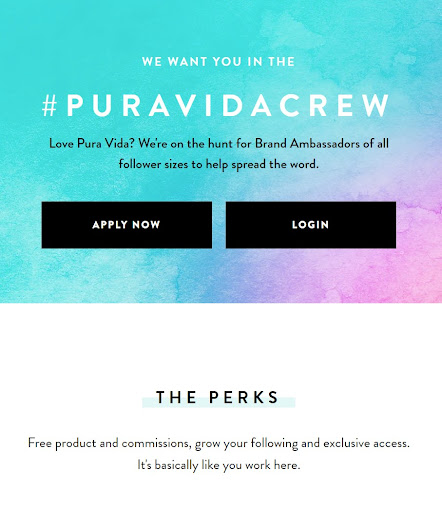Whenever I see a brand with plummeting engagement rates, its a sign of one thing most of the time.
They haven't considered hiring a dedicated community manager to manage their social media marketing plans. Social media management is more than editing posts in Canva and scheduling them for posting. The conversations and connections you build with your audience matter.
Trust me, you’re not alone in this struggle, as I’ve seen companies of all sizes grapple with their community engagement, from multimillion-dollar tech companies to local Mom and Pop shops.
Here's are some best practices for building a community management strategy. I also explore why social media community management is important for any savvy marketing leader.
What is Social Media Community Management?
Put simply, the goal of social media community management is to build an engaged online community through posting creative content, including short-form video and on-trend posts, with the hopes of increasing brand awareness, reach and loyalty.
Community management strategies are focused on sparking conversations, inspiring interactions, and providing an online space for discussion between brand advocates, employees, and customers.
Social Media Manager vs. Community Manager : Which Do You Need?
A community manager isn't the same as a social media manager. Yes, social media managers have often assumed this role.
But this doesn't produce optimal results.
Social media managers already wear multiple hats—social media strategist, graphic designer, copywriter, and content creator, just to name a few. Adding community management to their already long list of duties opens the door for lacklustre community engagement.
A more sustainable approach involves hiring a dedicated community manager to work in tandem with your social media team. A dedicated community manager can develop community management systems that integrate directly into your social media strategy, which ensures a more cohesive and effective approach to engagement.
Why is Social Media Community Management Important?
Three reasons - customer relationships, brand awareness, and brand authenticity. Let me explain.
You Improve Customer Relationships
One of the primary goals of community management is to remove the idea of a “faceless brand”, instead developing a recognizable brand voice and persona that drives authenticity and trust. Duolingo’s mascot, Duo, is a fantastic example of this.
Duo is known on TikTok for getting into hilarious hijinks, both inside Duolingo’s headquarters and out in public. It’s fair to say that Duo has a strong fanbase—as of writing this article, Duolingo has 6.7 million followers on TikTok, one of the most successful accounts on the platform.
By becoming “Duo”, as opposed to just Duolingo, the company fostered a sense of community and belonging among users. This, in turn, boosts brand advocacy and provides customers with a way to reach out with inquiries, concerns and feedback, which enhances satisfaction and builds trust.
@duolingo I’m prioritizing ME this year #duolingo #languagelearning #dulapeep ♬ original sound - Privacynbling
You Increase Brand Awareness
According to a study by Weber Shandwick and Forbes Insights, global executives attribute as much as 52% of their brand reputation to how social they are online.
Think of it like this: in your social circles, who do you find the most memorable? Most likely, it’s the person that’s the most engaging, who’s sharing stories, interesting facts, and telling jokes.
Brand awareness works much the same way. To remain top of mind, it’s necessary to be present online by consistently engaging with your target audience. Wendy’s is a fantastic example of this, as they often jump into fast-food related Twitter threads with clever responses.
Social media scheduling tools can help take the load off by letting you post once and then disseminate everywhere on a particular date and at a particual time.
You Promote Brand Authenticity
Authenticity is key in digital marketing. As much as 86% of consumers value an authentic brand image, and 66% believe transparency is one of the most attractive qualities in a business.
The rise of social media platforms like Be Real, which encourages users to share photos "in the moment," further reflects the growing demand for authenticity in the online sphere. As a business, your online community provides the opportunity to foster genuine connections and create an environment of open dialogue. This, in turn, lays the foundation for enduring brand loyalty and improved customer sentiment.
7 Social Media Community Management Strategy Best Practices
Focusing on community management within social media platforms can yield significant advantages for brands. However, it's essential to maintain a consistent strategy to fully realize these rewards. Merely accumulating likes and comments is not sufficient to cultivate a base of devoted followers.
Implement the following seven strategies to maximize the effectiveness of your social media community management efforts.
1. Determine Your Ideal Platforms
Chipotle recently pioneered marketing campaigns on the fledgling social app, Be Real, which is primarily popular with Gen Z. Their campaign encouraged users to share images of their Chipotle meals, effectively establishing a space for Chipotle on the app. But does this mean your brand should drop everything to build a community on BeReal? Perhaps not.
To build a thriving digital community, it’s important to consider exactly where your ideal community members already hang out online. In this case, the best practice is to hire dedicated community managers with in-depth knowledge of the various platforms available.
For instance, B2B and tech companies tend to find their communities on LinkedIn or YouTube, while eCommerce brands are more likely to thrive on consumer-centric platforms like Instagram and TikTok.
2. Prioritize Proactive Engagement
Don’t wait for your customers to reach out to you—take the initiative and reach out to them! It's not enough for your social media teams to only respond to internal comments and messages. They must engage with external content too.
Look at Tinder for inspiration, because they know how to make an impact. You'll often find them popping up in the comments section of trending posts. It's a genius move that produces many benefits:
- They ride the wave of viral posts, getting more brand visibility without creating new content,
- They’re expanding their network and reach by fostering connections with influencers and potential brand advocates and,
- It positions them as approachable and relevant to their target market.
3. Monitor Discussions and FAQs
Monitoring discussions that occur on your social media channels, also known as social listening, provides a better understanding of what resonates with your community. Online discussions can also highlight important questions potential customers may have, offering the perfect opportunity to provide customer support and build your brand’s community all at once.
If your social media teams don’t currently have a social listening strategy in place, consider looking into platforms like Sprout Social or Hootsuite. Both platforms offer user-friendly tools that enable you to monitor brand mentions, relevant keywords, and keep tabs on your competitors.
4. Establish Clear Community Guidelines and Moderation Rules
Negative comments and spam are inevitable on any social media platform, making it necessary for your team members to have a plan in place to deal with them. A good first step is to develop. a social media marketing plan with clear community guidelines and rules on how you moderate conversations on your channels.
Guidelines provide a framework for maintaining a safe and inclusive space for all community members, promoting a strong sense of belonging within your community. For example, social media platforms like Facebook, Discord or Reddit have built-in features to display community guidelines to new members.
5. Reward Your Biggest Advocates
Social media-specific loyalty programs are a powerful strategy for building successful communities online, due in large part to the rule of reciprocity.
Humans have this natural tendency to want to give back when they receive something, and this can be leveraged to promote and strengthen your social media engagement. For example, brands like Pura Vida offer a brand ambassador program that rewards ambassadors with a 10% cash commission for each sale they generate.
Remember that proactive approach I mentioned earlier? Pura Vida is a perfect example of putting it into action with their brand ambassadors. Instead of sitting back and waiting for loyal customers, they're taking the initiative by incentivizing their community to be active.

6. Encourage UGC from Followers
Your community management strategy would be incomplete without user-generated content.
User-generated content, or UGC, is an integral social media marketing strategy that taps into the power of social proof.
UGC refers to organic posts shared to social media by your customers. According to data from Finances Online, 66% of consumers have purchased from a brand after seeing it shared by another consumer on social media.
There are many strategies you can employ to promote UGC, such as the brand ambassador programs mentioned above. The goal is to promote authentic content surrounding your brand, in order to get more people talking about your products online.
7. Use the Right Social Media Tools
Investing in the right social media management software will do wonders for your community management efforts. While there are specific community management tools, like Agorapulse, all-in-one social media management tools like HubSpot, Hootsuite, and Sprout Social also include community management features.
Features to look out for include:
- In-depth metrics and analytics reporting, including user demographics
- Social listening tools, such as keyword monitoring and alerts
- Sentiment analysis and comment moderation
- Real-time synchronization
When it Comes to Community, You Get What You Give
Remember, a thriving community is a result of the genuine value, support, and interaction you provide. It's not just about passively waiting for customers to engage with your brand; it's about taking the initiative, actively engaging with your audience, and fostering meaningful connections.
But why stop here? Share the insights you've gained from this post with your network and provide value to others. Spread the knowledge by sharing this post on your favorite social media platform and empower others to unlock the potential of community management.
As the cherry on top—you can receive the latest marketing trends, insights and best practices straight to your inbox when you subscribe to our newsletter for marketing leaders. Stay one step ahead of the competition by always staying up to date!




